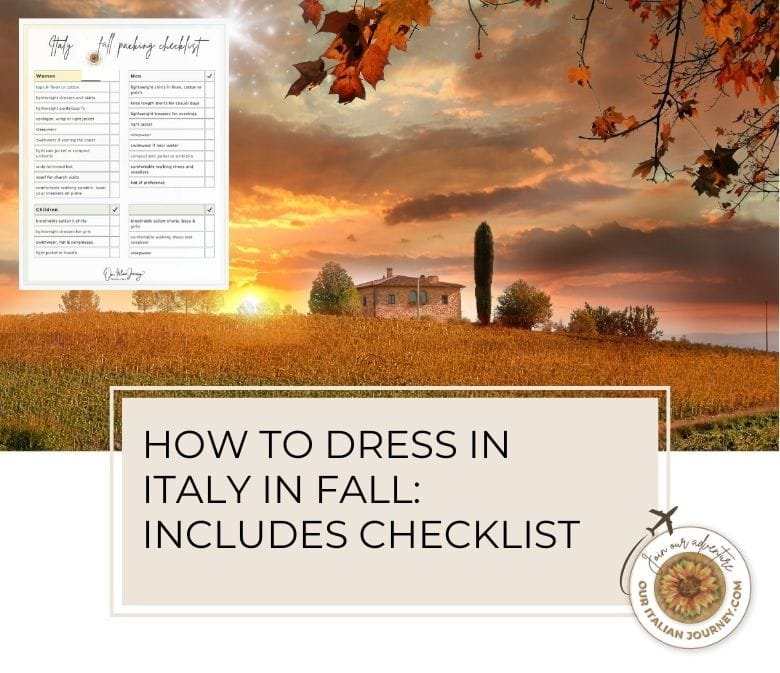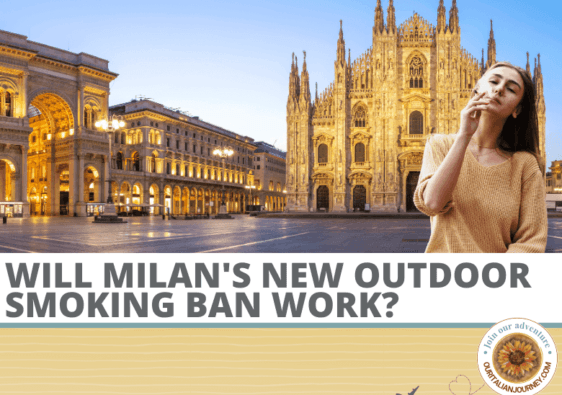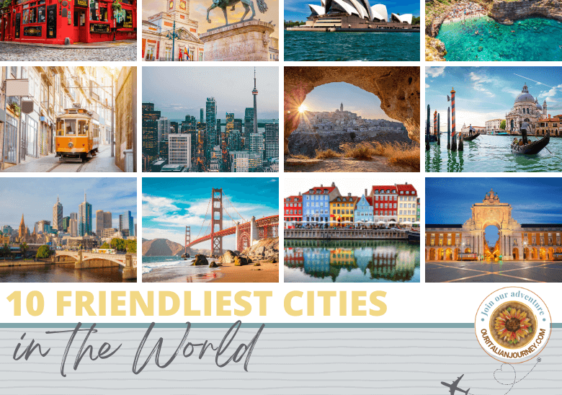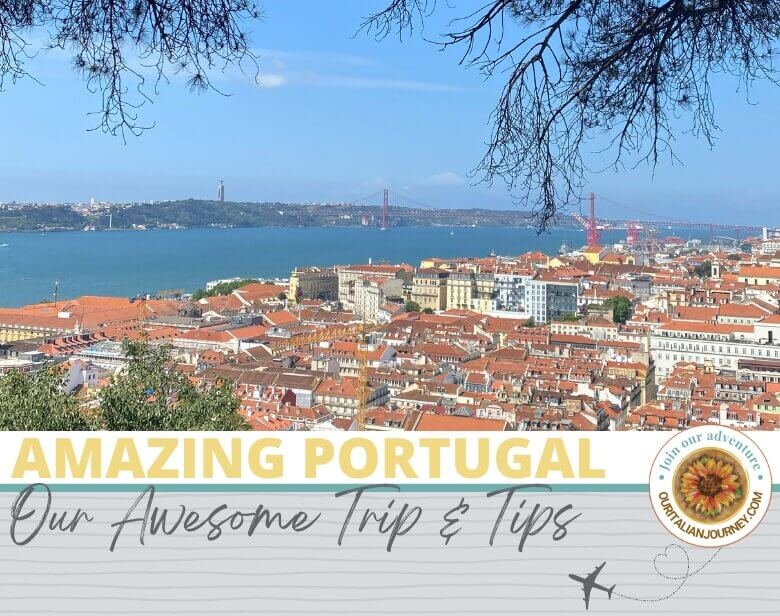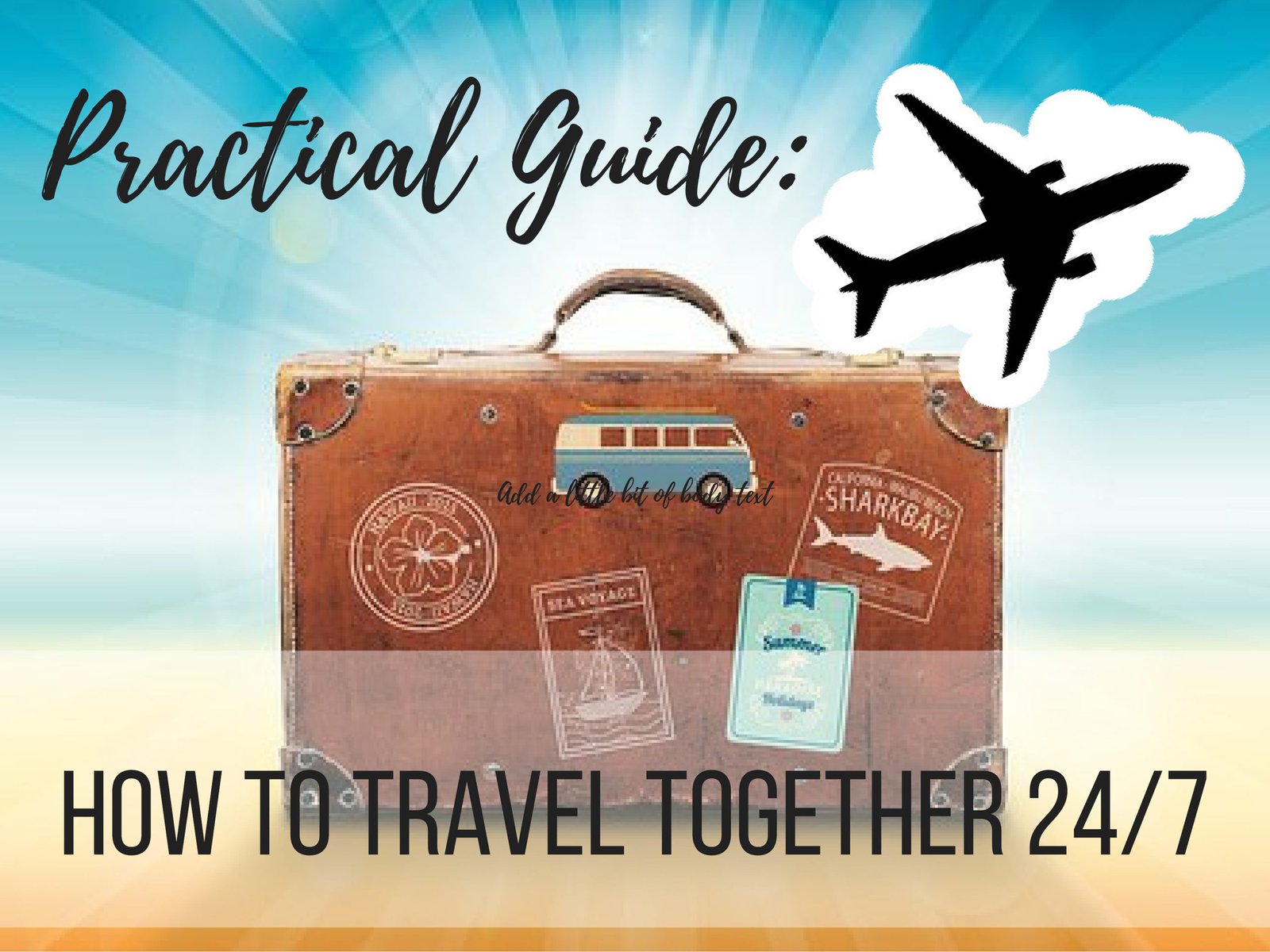How to dress in Italy in fall is a question every traveler asks. The season brings cooler temperatures, crisp air, and the changing beauty of the Italian landscape. From September through November, Italy transitions from warm late-summer days to chilly autumn evenings. Packing thoughtfully ensures you remain comfortable while embracing the elegance Italians naturally exude. Fall is also a quieter time to travel, so dressing appropriately helps you blend in with locals who continue to favor polished, timeless outfits.
Stay tuned for similar upcoming posts covering the individual seasons. You can view our general post on all the seasons here.
This post contains affiliate links that help keep this website running. By purchasing through our links, we make a small commission at no extra charge to you. Thank you for your support!
Italy in Fall: What to Expect
September often still feels like summer, particularly in southern regions such as Sicily, Puglia, and Naples. Temperatures during the day can be warm, sometimes in the mid-70s°F (24°C), but evenings are cooler, so a light sweater or jacket is essential. By October, even central cities like Rome and Florence start to experience crisp mornings and mild afternoons, while northern cities like Milan and Venice see temperatures drop into the 50s°F (10–15°C). Rain becomes more common, particularly in the north and along the Adriatic coast. November brings true autumn weather—chilly mornings, shorter days, and a higher chance of rain. Layering is essential, and keeping a compact umbrella in your bag is a wise move.
Cultural Dress Codes & Style Tips
Italians approach fall fashion with a blend of practicality and elegance. You’ll notice locals shift from summer brights to richer, muted tones—navy, burgundy, olive, and mustard. In cities, polished outfits are preferred over casual, sporty looks. For example, in Milan, even casual jeans are paired with stylish tops and structured jackets. Scarves are worn not just for warmth, but as a fashion statement.
Church visits require modest attire: shoulders and knees should be covered. Cardigans, long sleeves, and versatile layers allow you to move comfortably from outdoor walks to indoor attractions while staying respectful and stylish.
Fabrics & Footwear
For fall, fabrics should be breathable yet warm. Lightweight wool, cotton blends, denim, and cashmere sweaters are perfect for layering. Heavy winter fabrics are unnecessary until late November. Footwear is equally important: closed shoes such as leather sneakers, loafers, or ankle boots are ideal. Cobblestone streets, wet surfaces, and the occasional sudden rain shower make sandals or flimsy shoes impractical. Waterproofing sprays are helpful for city walking, especially in Venice or northern regions. Socks made of breathable wool or cotton blends help maintain comfort throughout the day.

Regional Clothing Notes
Northern Italy: Cities like Milan, Turin, and Venice cool quickly by October. Medium-weight jackets, scarves, and closed shoes are necessary. Rain is more frequent, so waterproof footwear or a light raincoat is recommended.
Central Italy: Florence and Rome are milder. Layering works best here—cardigans or light jackets over long-sleeve shirts allow flexibility for warmer afternoons.
Southern Italy: Naples, Sicily, and Puglia remain warm into October. Short sleeves may still be comfortable during the day, but evenings require a light jacket or sweater.
Women’s Summer Packing List (and what not to bring)
- Jeans or trousers for sightseeing
- Casual dresses with tights for evenings
- Lightweight sweaters and cardigans
- Medium-weight coat for cooler days
- Scarf for both warmth and style
- Comfortable loafers or ankle boots suitable for walking
❌ Don’t pack flip-flops, summer sandals, or overly summery dresses—they will not suit fall weather or Italian style.
Men’s Summer Packing List (and what not to bring)
- Jeans or chinos paired with long-sleeve shirts or sweaters
- A blazer or medium-weight jacket for evenings or city excursions
- Leather sneakers or ankle boots suitable for walking
❌ Avoid shorts after September and sporty sneakers; Italians rarely wear overly casual shoes in cities.
Children’s Summer Packing List (and what not to bring)
- Layers including t-shirts, sweaters, and light jackets
- Comfortable walking shoes or sneakers
- Raincoat or small foldable umbrella
❌ Avoid packing short-sleeve tops, shorts, or summer dresses—they won’t be warm enough.
Common Summer Packing Mistakes
Many travelers underestimate how cold November can be, especially in northern Italy. Another common mistake is assuming September is purely summer weather; early fall mornings and evenings often require layers. Bringing only light clothing can make walking tours uncomfortable, and rainy days frustrating.
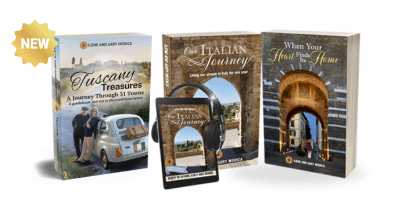
Tuscany Treasures is a guidebook with a twist. Personal stories accompany places to visit, festivals & traditions in each town, and more. Separate chapters on rail travel, seasonal information, and Tuscany’s foods and wine.
Final Thoughts…
Fall is an exceptional time to visit Italy. Crowds are smaller, the weather is generally pleasant, and thelandscapes are stunning. By packing versatile layers, practical footwear, and a few stylish accessories, you’ll stay comfortable while fitting right in with the Italian sense of style. Paying attention to the subtle seasonal shifts makes all the difference in enjoying your autumn Italian adventure.
For even more tips on what to expect in every season, including how weather can shape your travel experience, see the “Seasons in Italy” chapter in Tuscany Treasures. It’s a great companion if you’re planning ahead for future trips or want to understand Italy’s rhythms year-round. Coming Fall 2025 is Umbria Treasures using the same format.
And if you’d like this checklist in a handy, printable format, we’ve put together a free PDF you can save on your phone or print before you go. If you have additional suggestions, please let me know and I can add it to the list!




